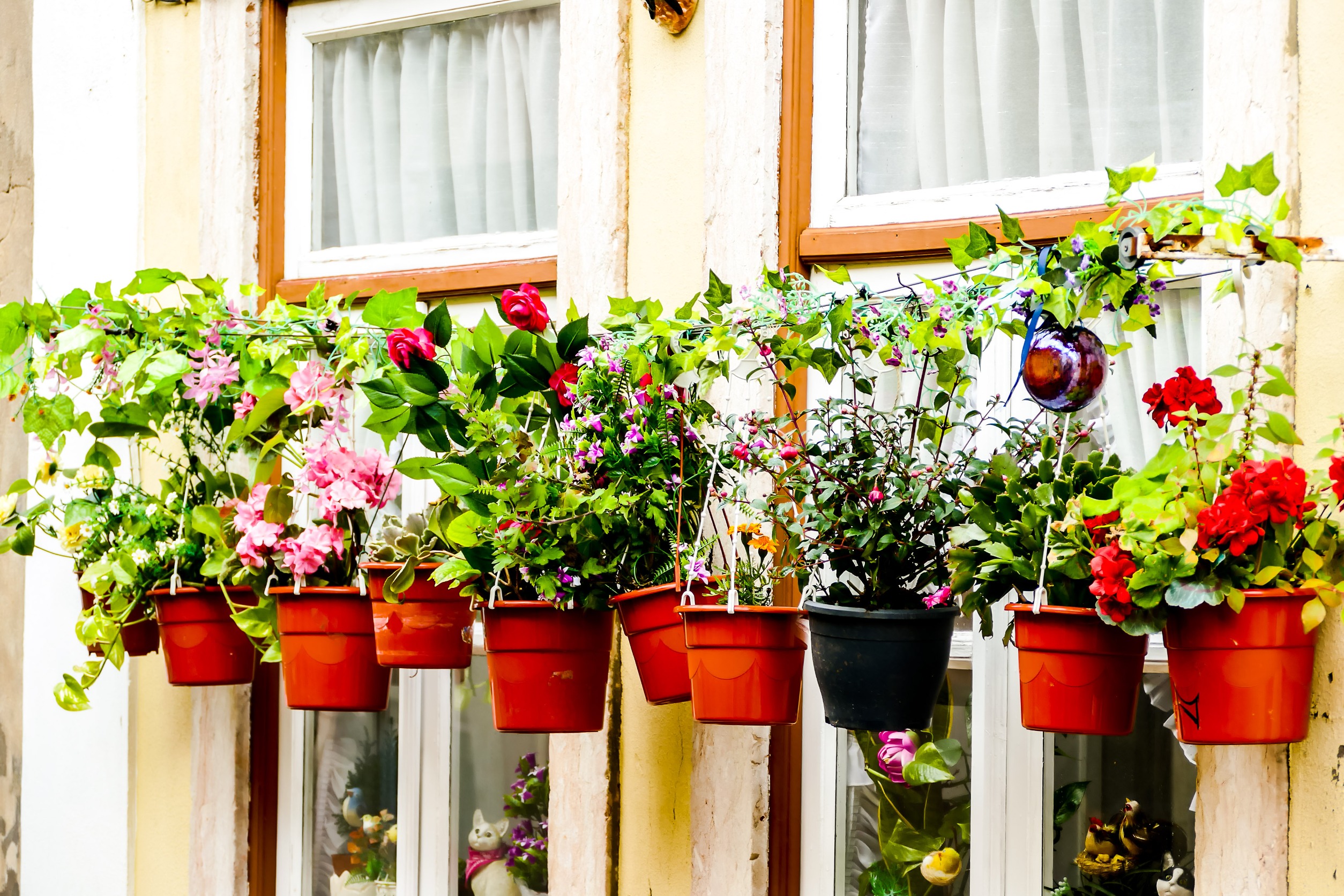The pleasures of gardening do not have to be sacrificed for city living. Even the smallest balcony may be turned into a verdant haven with a little imagination. Choosing the appropriate plants for your balcony can have a significant impact. Let’s examine the fundamentals of selecting the ideal vegetation for your raised area.
Assess Your Balcony’s Environment
Sunlight Exposure
It’s important to consider how much sunlight your balcony gets. Various plants require various amounts of sunlight.
- Full Sun: Sun-loving plants thrive in balconies that receive at least six hours of direct sunlight daily.
- Partial Shade: You’ll need plants that do well in partial shade if your balcony receives three to six hours of sunlight daily.
- Complete shadow: You need plants that can withstand shadow if you receive less than three hours of direct sunlight.
Wind Conditions
Plants can be killed by wind. Strong winds have the potential to harm plants and dry out the soil. If your balcony is subject to strong winds, pick hardy plants or consider windbreaks like barriers and trellises.
Temperature Fluctuations
Microclimates can exist on balconies. Ath may be warmer than facing north. Consider the temperature and choose plants that can tolerate the fluctuations in your setting.
Space Considerations
Size of Balcony
The kinds and quantity of plants on your balcony will depend on their size.
- Consider vertical gardening options such as wall-mounted plant shelves, railing planters, or hanging pots for small spaces.
- Bigger Spaces: You can arrange different pot sizes in any way you choose and even set up places to sit in your garden.
Container Choice
The plant’s root depth and growth tendencies should be considered while selecting a container. To avoid waterlogging, make sure your pots have adequate drainage. Materials such as plastic, ceramic, and terracotta have advantages and disadvantages regarding weight, appearance, and moisture retention.
Types of Plants for Balconies
Flowering Plants
To add a splash of color:
- Geraniums: Hardy and fond of the sun.
- Great for hanging baskets are petunias.
- Marigolds: Bright and pest-repellent.
Edible Plants
Why not make both useful and beautiful?
- Herbs: Mint, thyme, and basil grow well in containers.
- Bell peppers, lettuce, and cherry tomatoes are examples of vegetables.
- Fruits: miniature citrus trees and strawberries.
Plants with foliage
For a verdant, lush appearance:
- Ferns: Perfect for regions with shade.
- Succulents: Ideal for dry, sunny areas.
- Spider plants are versatile and low maintenance.
Maintenance and Care
Watering Needs
Because balcony plants are exposed to light and wind, they may require more regular watering. Pots that water themselves can be a blessing. Group plants that require similar amounts of water together to make your life easier.
Fertilization
Balcony plants are kept healthy with regular feeding. Compost or seaweed extract are examples of organic fertilizers that can give your plants the nutrients they require without risking chemical accumulation.
Pruning and Deadheading
Frequent trimming promotes growth and preserves the form of the plant. Removing wasted flowers or deadheading encourages more blooms and maintains the tidy appearance of your balcony.
Pest Control
Natural Predators
Promote beneficial insects that feed on common pests, such as lacewings and ladybugs. They serve as a system of natural pest management.
Organic Remedies
Use natural pest control techniques like homemade garlic sprays, insecticidal soaps, or neem oil. Both the environment and your health are safer with these.
Personal Aesthetic and Style
Theme and Color Scheme
Your style should be reflected on your balcony:
- Tropical Paradise: Use vibrant hues and big-leaved plants like philodendron or monstera.
- Zen Garden: Use pebbles, bamboo, and bonsai in simple designs.
- Cottage Garden: Use a variety of flowering plants in an arrangement that seems random but endearing.
Furniture and Accessories
Your balcony can become a veritable haven by balancing plants with cozy furniture, outdoor rugs, and accent pieces. Consider the ambiance you wish to create, whether a sophisticated gathering area or a small, comfortable nook.
In conclusion
The goal of balcony gardening is to create an environment that you love and appreciate, which goes beyond simply choosing plants and pots. You can design a flourishing little garden that adds happiness and peace to your city life by knowing the conditions of your balcony, choosing the appropriate plants, and considering your style.

